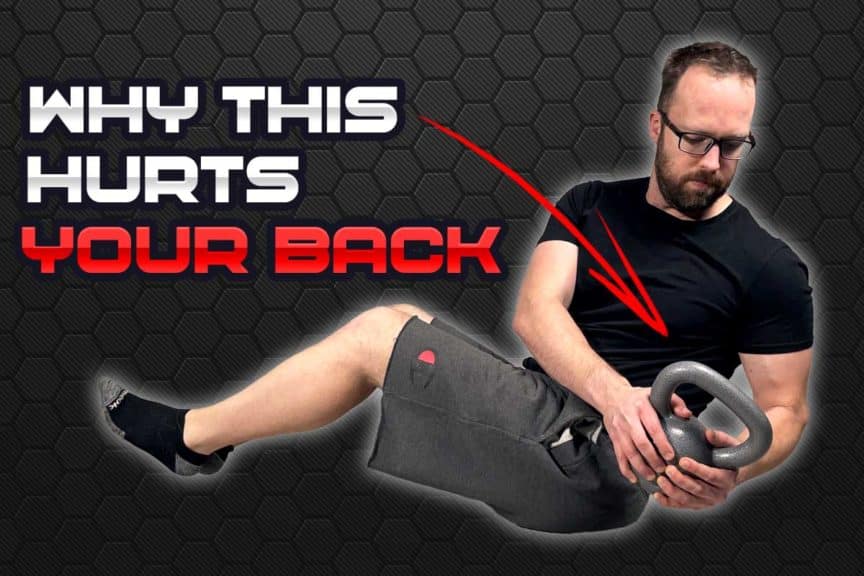The Russian twist is an exercise that has been around for a relatively long time. As a result, it has gained a divisive reputation as to whether or not its core-strengthening benefits outweigh the risks of irritating the spine. While no single exercise will ever be appropriate for every individual, there are several reasons to stay away from this exercise, as well as several alternative exercises that can be performed in its place. If you’d like to know how to keep yourself as safe as possible if you’re still wanting to perform this exercise, I’ve got you covered. All of these things will be discussed in this article.
Back pain experienced with Russian twists is most often the result of facet joint irritation in the lower spine or in the sacroiliac (SI) joint just below the spine. It can occur for several reasons and can often be avoided or greatly reduced with specific modifications made to the exercise.
If you want to know all of the risk factors that can predispose you to back pain with this exercise, and if you want to learn all of the modifications you can make to eliminate and avoid it, then keep on reading the rest of this article. There’s some highly beneficial information in each of the following sections.
ARTICLE OVERVIEW (QUICK LINKS)
Click/tap any of the following headlines to instantly jump to that section of the article!
• Why this exercise tends to cause lower back pain
• What most experts are saying about Russian twists these days
• How to know if you should stay away from this exercise altogether
• How to modify the Russian twist to avoid back irritation
• Exercise alternatives that are safer than the Russian twist
• Final thoughts
Related article: The Best Ab Wheel Exercises for Avoiding Back Pain | Beginners, Listen Up!
Why this exercise tends to cause lower back pain
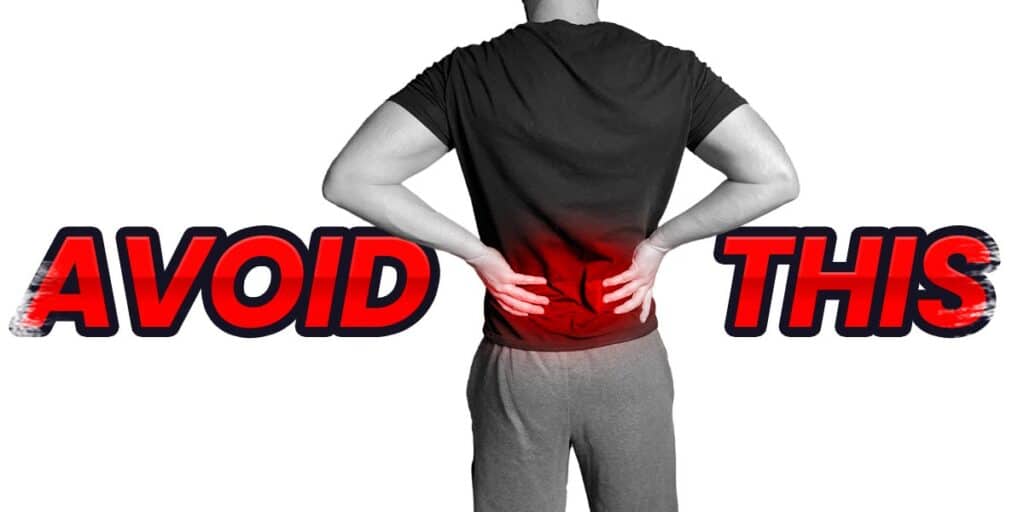
While there are a number of other exercises that exist to challenge the same muscles that the Russian twist does, the Russian twist tends to put the spine and hips at a unique disadvantage for a few different reasons.
The extent to which each of the following factors will directly affect an individual performing the Russian twist will depend on certain aspects pertaining to that individual. While these aspects are beyond the scope of this article, it’s critical to realize that the following factors will affect each individual differently; some may not notice any adverse sensations, while others will experience moderate discomfort only after a handful of reps or sets.
Nonetheless, each of the three main factors listed below is well-known to be detrimental to spinal health, especially when performed repeatedly.
Flexion with rotation
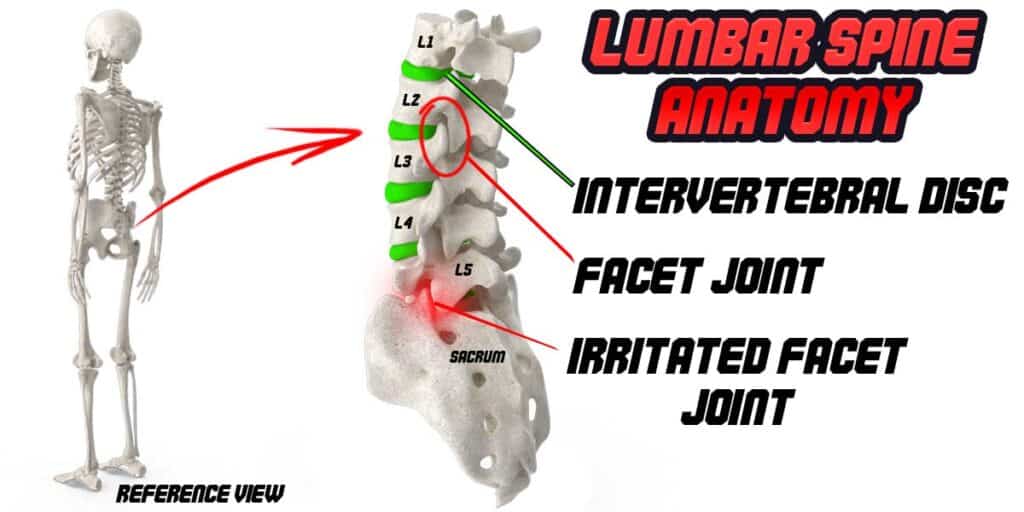
Many individuals make the mistake of performing the Russian twist with a rounded lower back instead of one that remains straight or “flat” when leaning back and rotating from side to side.
While some lumbar (lower spine) rounding by itself may not be irritating for some (but likely will be for those who have disc issues), rotating the spine (with a resistance, nonetheless) while holding the spine in a rounded position can create a lot of pressure and torque on the annular fibers of the lumbar discs. These fibers run in a criss-cross fashion and help to provide the disc with its structural integrity.
If nothing else, be sure to keep your lower back straight or “flat” when performing the Russian twist, as this will significantly reduce the pressure and torque on these important structural fibers of your discs. When these fibers undergo too much torque, they can lead to structural weakness of the disc, which can lead to disc bulges and other often painful conditions of the spine.
Loaded rotation with a fixed anchor point
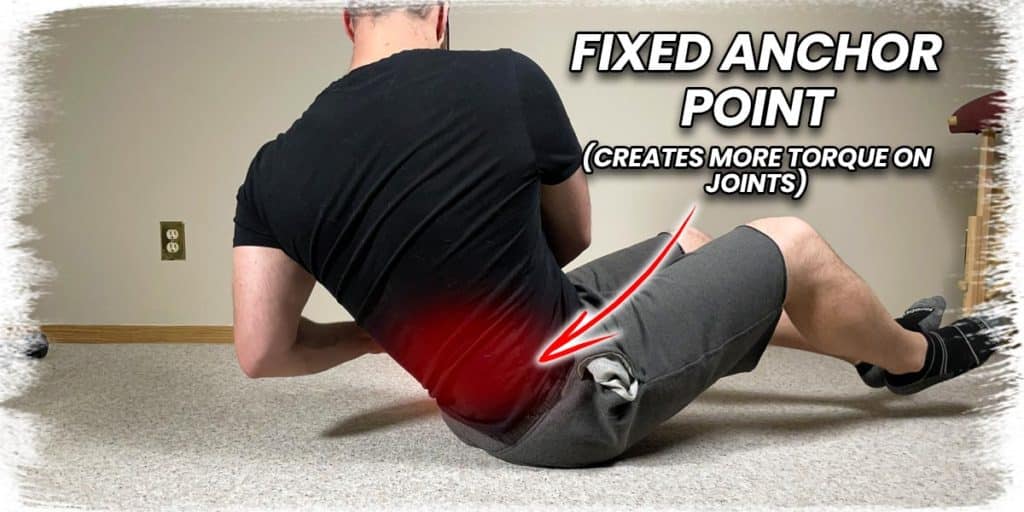
The lower spine tends to be happiest when it can rotate in a manner that “brings the hips along for the ride.” Think of swinging a baseball bat or a golf club; the lower spine (along with the rest of the spine) does a whole lot of rotation. Still, the rotation also occurs below the spine and into the hips. This hips-and-spine rotation not only generates power but reduces excessive amounts of torque running through the vertebrae (the spinal column).
With the Russian twist, the entire spine tends to go through an extensive range of rotation, but the hips stay anchored in place (on the ground), facing directly forward the whole time. When you have a large movement occur on top of a structure that doesn’t move beneath, it produces a large amount of torque through that particular joint. In this case, that torque tends to be through the general lumbar spine (the bottom five vertebrae).
High amounts of torque that occur over and over again can lead to pain and irritation of these joints and structures of the lower spine, especially if they’re not super healthy to begin with.
Speed of the movement
If you take the two points mentioned above and combine each of them with the fact that the Russian twist is often performed with fast, ballistic, rotational movement, you wind up with conditions ripe for potential spine irritation. Combine all of this with the fact that this exercise is often performed with moderate or high resistance, and it becomes incredibly easy to lose precise control of the movement, causing joints and tissues to move in ways or through ranges they may not tolerate.
As a general rule, the faster the speed at which an exercise is performed, the greater the loss of finely-tuned movement control of that particular exercise. While this isn’t an issue for many exercises, the Russian twist tends to offer less forgiveness with movement errors due to the sensitive nature of the spine and its surrounding structures.
What most experts are saying about Russian twists these days
As science continues to dive deeper into understanding spinal pathologies (injuries and diseases of the spine), biomechanics (movements of the spine) and exercise physiology, the Russian Twist has largely fallen out of favour with many fitness and healthcare professionals who understand the basics of these topics.
While rotational strength and defined muscles around the midsection can be essential to have for various populations, such as athletes, bodybuilders, and other fitness enthusiasts, there is an absolute myriad of different exercises that can challenge these muscles without torquing the spine the same way that the Russian twist tends to do.
Most experts in the fields of sports performance, fitness, and biomechanics these days tend to believe that the Russian twist isn’t an ideal exercise to perform and that there are plenty of more ideal exercises that can be opted for over the Russian twist. (As an expert myself, I also tend to fall into this category.)
How to know if you should stay away from this exercise altogether
If you have a history of lower back pain or pain in your SI joint, it may just be a good idea to skip the Russian twist altogether. A big reason as to why is that there are plenty of other great exercises that can be done to challenge the same muscles around the midsection without putting the often high levels of torque through the facet joints and SI joints in your lower back and hips.
If you have no history of lower back pain but experience mild or moderate discomfort with the Russian twist, again, it may not be a bad idea to just forego the exercise and try these exercise variations instead. However, if you insist on continuing on with the Russian twist, make sure to try these modifications so that you gain a better understanding of what you can do to hopefully decrease or eliminate any discomfort you may be experiencing when trying to twist away.
Here are some general rules to keep in mind with knowing if this exercise is for you:
- If your back continually gets irritated with general physical activities of any kind, the Russian twist is likely to cause more trouble than it’s worth. So, stay away from it.
- If you have a known history of disc issues (such as disc bulges) or facet joint issues, such as arthritis, don’t bother with this exercise.
- If you’re impartial to the Russian twist and are only doing it because you’re not sure of any other similar (but likely safer) exercises, give another exercise or two a try instead.
- If you’re only doing this exercise relatively infrequently, such as only one time per week, you’re likely ok.
How to modify the Russian twist to avoid back irritation
Maybe you’re not wanting to forego or give up entirely on performing the Russian twist or only experience very infrequent and incredibly mild back discomfort with the exercise. In that case, the following modifications are worth implementing (or at least being aware of) to keep your back happier (and safer) and still give an intense challenge to the core muscles.
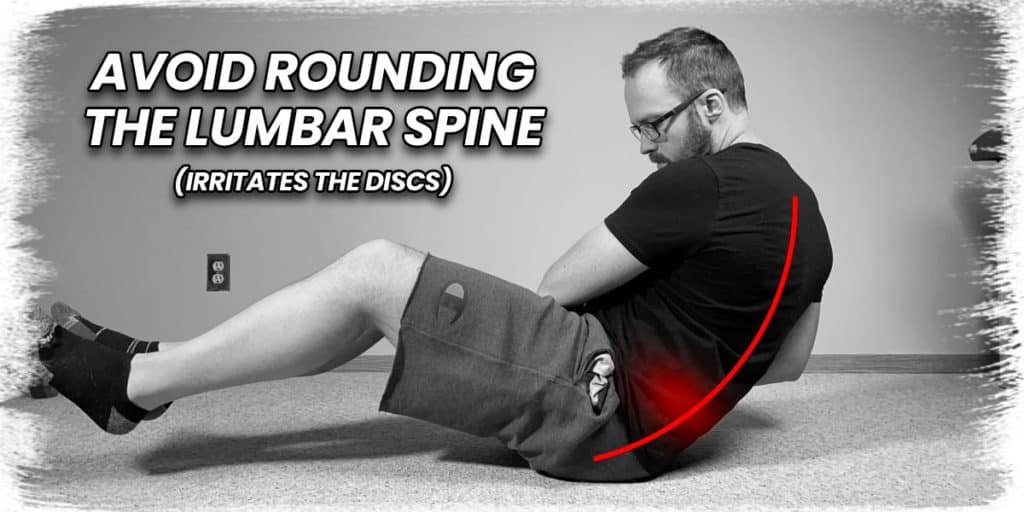
Consider making the following modifications if you’re dead-set on performing the Russian twist
- Stay away from relatively heavy resistance with this exercise; it will likely only add further compression to the facets while placing more significant stress on the annular fibers on the lumbar discs.
- Don’t perform the twists with rapid speed — this will only increase the amount of torque running through the discs. It may also cause the facet joints to become irritated by moving slightly further than ideal or than what they’re used to. This can lead to irritation of the joint or even causing the joint to get “stuck” in a less than ideal position, resulting in some sharp, uncomfortable pain.
- Use a lighter weight, keep it close to your body and perform the movement as slowly as possible. This will provide adequate challenge to the midsection while decreasing the risk of irritation or injury from twisting with a weight that is too heavy or through uncontrolled, ballistic movement.
- Only perform the movement with a straight or “flat” lower back; letting the lower back stay in a rounded position while performing the movement won’t do anything to make your discs or joints happier or healthier.
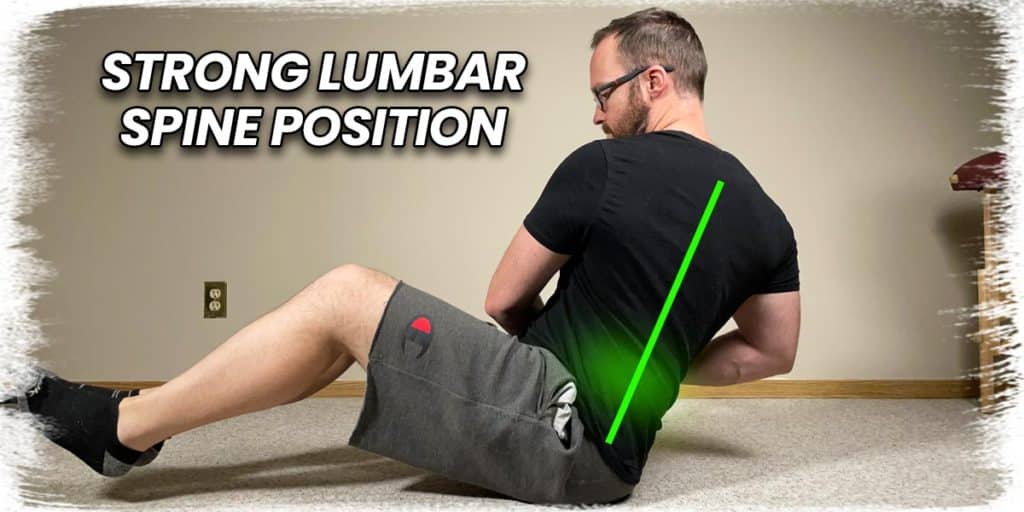
Exercise Alternatives that are safer than the Russian twist
There are a plethora of alternative exercises to the Russian Twist that you can try if you want to find ways to effectively challenge and strengthen your obliques (along with the rest of your core). So, don’t feel like there aren’t any other ways to make the progress you’re after if you want to ditch the Russian twist.
I’ve got an entire article dedicated to five of my favorite alternatives. Not only will they save your spine some wear and tear, but they’re also going to light up your obliques and core better than the Russian twist does. So, go check it out by clicking/tapping on the link below:
See my article: 5 Core Exercises WAY BETTER than Russian Twists (Save Your Spine)
Final thoughts
The Russian Twist has largely fallen out of favour with the world of health sciences and fitness over the past decade or so. While many people can perform the movement without any known issues, plenty of individuals can’t say the same.
Maintaining good spinal hygiene is an essential step in ensuring that you keep your lower back healthy and pain-free through all of your days. Unfortunately, the Russian twist tends to break a lot of the general rules associated with said hygiene.
Unless you absolutely can’t live without it, it’s worth performing another exercise that challenges the core in the same way, but without the major flaw that this exercise has when it comes to looking out for your spine.
It’s safe to say that the Russian twist likely “doesn’t have your back” when it comes to offering you core benefits you may be after. So, keep training hard, but consider ditching the Russian twist for good.

Hi! I’m Jim Wittstrom, PT, DPT, CSCS, Pn1.
I am a physical therapist who is passionate about all things pertaining to strength & conditioning, human movement, injury prevention and rehabilitation. I created StrengthResurgence.com in order to help others become stronger and healthier. I also love helping aspiring students and therapists fulfill their dreams of becoming successful in school and within their clinical PT practice. Thanks for checking out my site!

